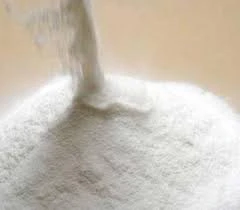Understanding HEMC A Comprehensive Overview
HEMC, or Hydroxyethyl Methyl Cellulose, is a widely used cellulose derivative in numerous industries. This non-ionic polymer is derived from natural cellulose by a chemical modification process where hydroxyethyl and methyl groups are introduced. The result is a versatile product that finds applications in pharmaceuticals, food processing, construction, and cosmetics, among others. This article aims to explore the properties, applications, and benefits of HEMC, showcasing why it has become a staple in various sectors.
Properties of HEMC
HEMC is known for its unique combination of physical and chemical properties. It is a white, odorless powder that is soluble in cold water, forming a clear and viscous solution. One of the most significant characteristics of HEMC is its ability to form films, which is essential for various applications. Additionally, its thickening and stabilizing properties make it an ideal choice in formulations where viscosity control is crucial.
The degree of substitution, which indicates the number of hydroxyl groups on the cellulose molecule replaced by hydroxyethyl and methyl groups, can vary, influencing the solubility and viscosity of HEMC. This versatility allows manufacturers to tailor HEMC to meet specific requirements for different applications.
Applications in Various Industries
.
2. Food Industry In food processing, HEMC serves as a thickener and stabilizer, enhancing the texture and mouthfeel of products like sauces, dressings, and dairy products. Its ability to retain moisture is crucial for extending the shelf life of food items.
hemc

3. Construction HEMC is a key ingredient in cement and mortar formulations. Its thickening properties improve workability and adhesion, while its water-retention capabilities enhance the curing process. This results in stronger, more durable construction materials.
4. Cosmetics and Personal Care In cosmetics, HEMC is used as a thickener and emulsifying agent, helping to stabilize creams, lotions, and gels. Its non-toxic and biodegradable nature makes it a preferred choice in formulations targeting sensitive skin.
5. Agriculture HEMC is also utilized in agriculture, particularly in controlled-release fertilizers and soil conditioners. Its ability to retain water and nutrients boosts plant growth and resilience against environmental stressors.
Benefits of Using HEMC
The benefits of HEMC are manifold. Its non-toxic nature makes it safe for use in food and cosmetic products, aligning with consumer trends towards more natural and healthier options. The versatility of HEMC allows manufacturers to create customized solutions for specific problems, enhancing product functionality and user satisfaction.
Moreover, HEMC is easy to handle and process. It has excellent stability under various pH conditions and is resistant to microbial degradation, ensuring that products remain effective over time. As sustainability becomes a key focus across industries, the biodegradable properties of HEMC further add to its appeal.
Conclusion
HEMC stands out as an essential polymer with a wide range of applications across multiple industries. Its unique properties, including thickening, stabilizing, and film-forming capabilities, make it an invaluable asset in pharmaceuticals, food, construction, cosmetics, and agriculture. As industries continue to prioritize safety, sustainability, and efficiency, HEMC's role is likely to expand further, solidifying its place as a cornerstone in modern product formulations. Understanding and leveraging the benefits of HEMC can lead to innovations and improvements in product development, ultimately enhancing consumer experiences and industry standards.
-
Rdp Powder: Key Considerations for Wholesalers in the Building Materials IndustryNewsJul.08,2025
-
Key Considerations for Wholesalers: Navigating the World of Hpmc - Based ProductsNewsJul.08,2025
-
Hpmc Detergent: Key Considerations for WholesalersNewsJul.08,2025
-
Key Considerations for Wholesalers: China Hpmc For Tile Adhesive, Coating Additives, Concrete Additives, and MoreNewsJul.08,2025
-
Crucial Considerations for Wholesalers: Navigating the World of Construction MaterialsNewsJul.08,2025
-
Key Considerations for Wholesalers Sourcing Additive For Cement, Additive For Concrete, Additive For Putty from Additive Manufacturer Shijiazhuang Gaocheng District Yongfeng Cellulose Co., Ltd.NewsJul.08,2025




